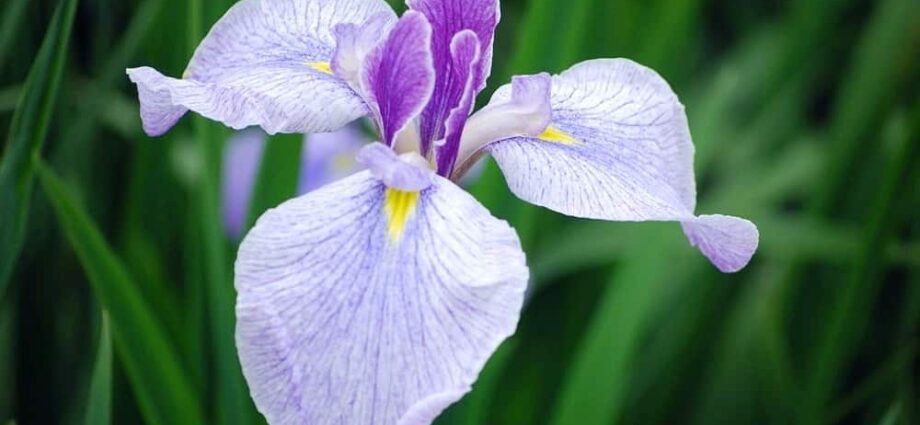Japanese iris differs from other representatives of this genus for its unusual flower shape. They are large, bright, with spreading petals, but completely odorless. In Japan it is a symbol of the samurai, and in Russia it is a fabulous decoration of the garden.
The best time for this is from the end of August to October, before the onset of frost. Before you start planting, you need to choose the right place for this moody flower. It should be open to sunlight, irises like a lot of light. But the presence of winds on the site is unacceptable, the irises should be protected from drafts.
Japanese iris is distinguished by its large and bright flowers
The soil is suitable for sandy and loamy. It should be slightly acidic, but free of lime. If the site has heavy soil, clayey and damp, you can fix it: dilute it with peat and sand.
The rhizome planting process includes the following steps:
- Dig up the ground, add the necessary additional components (sand, peat).
- Make a hole 15 cm deep. Place a small mound in the center on which you place the rhizome. Spread the roots along its slopes, cover with earth, and leave the root back uncovered.
- Water well. Arrange the adjacent irises in a circle.
The soil of this variety is not mulched.
For planting with bulbs, you should adhere to the following rules:
- we dig up the soil with sand and fertilizers;
- in a hole 15 cm deep, place the onion with the tip up, bury it;
- we mulch the soil with foliage, straw or needles. In the spring, we remove the covering material when the frost period ends.
Planting with bulbs is carried out in September or October before the onset of cold weather.
With proper care, he will thank you with an abundance of large and healthy flowers. To do this, you need to know a few rules:
- these flowers love loose, well-drained soil. When planting, you can make a hole with bumpers from the soil. This will retain water when watering and after rain;
- moistening the soil should be carried out only during flowering. If the weather is hot, it is better to water it in the evening, trying not to get water on the plants;
- you need to get rid of weeds and loosen the ground as needed. This must be done very carefully so as not to damage the roots;
- in the spring, when the soil has warmed up and dried out, you need to apply mineral fertilizers with phosphorus, potassium and nitrogen.
Before winter, we mulch the soil with leaves, and cover it with a film on top. In the spring, after the good weather has been established, we remove all the shelter so as not to interfere with the young sprouts.










